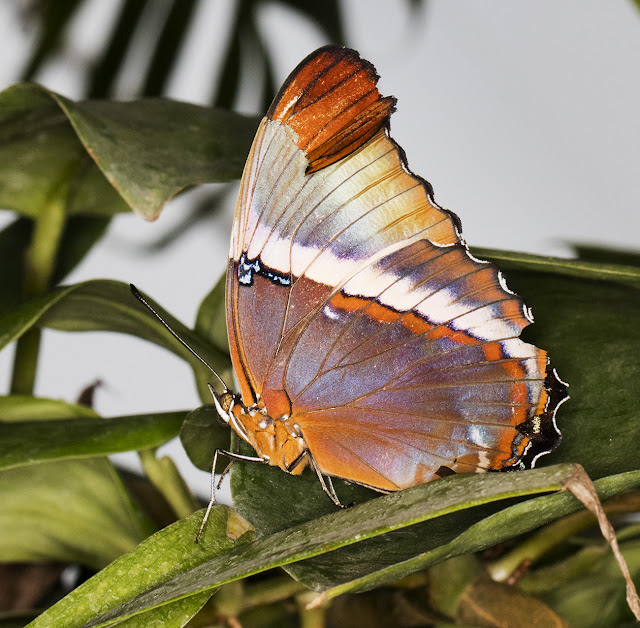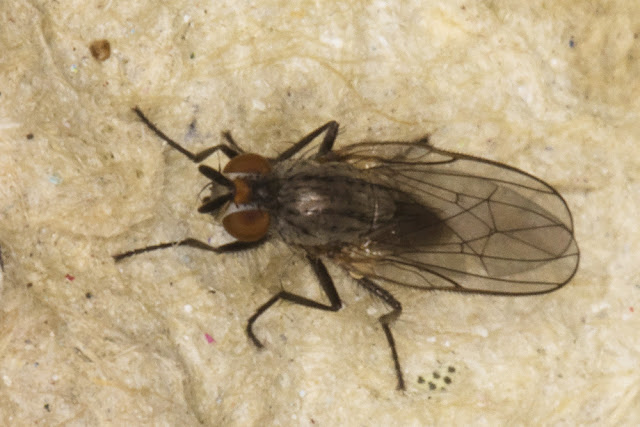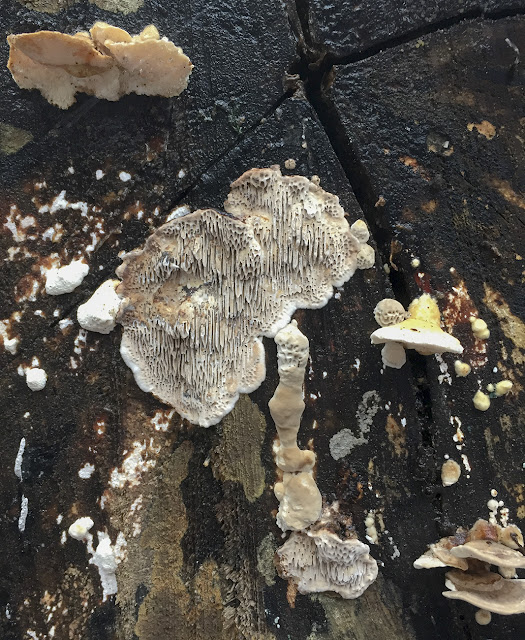 |
| Harvestman, Oligolophus hanseni. Cuckoo Wood, High Elms, 12 August 2015 |
I have a row of posts planned, showing creatures that came in or near moth traps last year that were not moths. Starting with harvestmen, which are not spiders, even though they look similar. (I'll end with spiders.) Some have short legs, like this Oligolophus hanseni, and some have very long legs, so that they are one of the three groups of creatures that get called "Daddy Long-legs."
They are carnivorous, and when I do night trapping sessions I often see them wandering around, presumably on the hunt (though possibly on the hunt for mates), like this first one, which was just passing by my trap when I photographed it. I don't usually find them actually in the trap.
 |
| Harvestman, Leiobunum blackwalli. Hayes, 11 November 2015 |
This female Leiobunum blackwalli was on the outside of my garden trap in Hayes in the morning. It has long legs, but not
really long legs. Unlike this:
 |
| Dicranopalpus ramosus. House wall in Crowborough, 7 October 2015. |
The legs of this Dicranopalpus ramosus are so long and fine that I failed to get their tips into the shot. My eyesight is not as sharp as it once was! Here is a closer shot of the body:
 |
| Dicranopalpus ramosus. House wall in Crowborough, 7 October 2015. |
Unlike spiders, harvestmen have a single part to their body. The two eyes are on top of a little periscope at the front. There are enough species that I am very dubious about identifying most of them, but this one has long forked palps as well as those long, long legs out to the sides, so I can pretend to be knowledgeable by identifying it at a glance.
These last two harvestmen were not actually in or near an actual moth trap, but I always check the front wall of this house in Crowborough when I visit, because moths are often to be found resting near the porch light. When I took these photos, part of the wall was instead covered with these D. ramosus, with among them just one different harvestman:
 |
| Red Harvestman, Opilio canestrinii. House wall in Crowborough, 7 October 2015. |
A Red Harvestman, also long-legged, but with the legs spread fore and aft instead of to the sides.
 |
| Red Harvestman, Opilio canestrinii. House wall in Crowborough, 7 October 2015. |
Close up, you can see more differences, such as the much shorter and unbranched palps. The tip of the one to our right is not missing; it is turned under, feeling the surface of the wall.
I did not identify any of these except for the Dicranopalpus ramosus. That was done by helpful people on
iSpot.





























